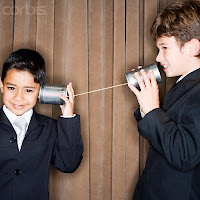I Heard it from... The Journey of Music from the Musician to You!

So as I began to read chapter 3 of the Popular Music in Theory book, I was truly intrigued on how they would tackle the topic of “Mediation” in which the chapter was titled. Unlike the traditional definition of mediation, Negus breaks this term into three main points of focus:
1. Mediation as intermediary action
2. Mediation as transmission
3. Mediation of social relationships
Negus describes mediation as intermediary action as the process in which individuals intervene in the music process. The process of production and consumption; between corporation and consumer and between artists and audience. This concept deals with the many different people that take part in the different stages of music from productions to distribution to consumption. Individuals involved in the process range from staff at record companies to DJs and even music video producers. These people are known as the “gatekeepers” because they ultimately make the decision of what you and I hear and buy.
The next point of mediation is mediation as transmission. This phrase describes the process in which popular music disseminated to us through technology. Negus describes to us that there has been at least six different ways in which music has been given to the people. From street peddlers pushing sheet music and printed word on the streets, sound carriers, the broadcasting of radio, musical instruments, moving images and telecommunication technologies. Each of these stages had its internal evolutions that eventually led to something new. These new forms of transmission have not necessarily taken over the previous but have added to. For example we not only have song lyrics and music videos but rather we have some music videos that display the lyrics on screen while the video is taking place.
(lyrics begin at 1:20)
The third and final aspect of mediation is the mediation of social relationships. This last aspect focuses on the relation of the previous two. The impact of what happens with music from who is involved and how they are involved to the way it gets out to us s listeners. This takes us back to chapter six of this book where we looked at the geographical aspects of popular music. Just as rap group Wu Tang Clan sang the song C.R.E.A.M. (cash rules everything around me), this is very true for where music is heard and what kind of music is heard. The more social influence one has on a particular area, the more the musical selections of that group will reflect in that area. This is partly why we have different radio stations.
Have you ever noticed that radio stations and music stores reflect one another? When you walk into a music store you have to walk around to find the section of the musical genre you like. When you turn on the radio, you have to change the stations to find the musical genre you like. This is not a coincidence. According to Negus, this is a strategic move done by record companies, music stores, radio stations and other individuals that are involved in the intermediary action process. This strategy was to allow for different types of music to be evenly distributed across a region but still at the same time control what we hear.
I am a fan of urban music so I listen to a lot of hip-hop and r&b so you will come to know that a lot of my references are examples of that genre. Even though I listened to Gospel rap, I still hear what is popular in secular rap. I you ever wondered why you like the kind of music you like? You may think that it is because of your musical taste. In some cases that may be true, but how did you get exposed to it? Have you ever wondered why some the most talented remain underground but every man, woman and child knows how to do the “Soulja Boy” or the “Stanky leg” (I still can’t understand why anyone would be excited to have their leg be affiliated with anything that stinks)? These intermediaries are giving us selected limited material and saying, “you choose.” This brings me to my next point.
With the constant advances of the forms of media transmission, artists are not as creative as they once were. Not to discredit the artists of today, because you have to be very talented to come up with your own dance every few months; but they are no longer storytellers like the days of old. When there was only radio transmission, musicians had to be creative enough to tell you a story. You could not see where they were; only hear what they were telling you. So they had to be able to tell the story good enough to allow you to create a picture in your head and travel to that place with them. Old emcees like Slick Rick, Rakim, Biggie, Tupac, Nas and Eminem painted a picture for you, to let you see what they saw. So when the music videos were made, the image that you envisioned while listening was the image you saw in the video. Now we are in the era of every song on the album becomes a hit and a music video is made. Negus goes to state that this allows the artists to heavily depend on music videos to reach us as an audience. So now I no longer have to be a storyteller to show you what I am talking about, I can give you instructions and show you myself on my new music video.
So as we continue to be a species that is constantly upgrading, there will be new forms of mediation as it relates to popular music (look at cds, pretty soon everything will be digital) we have to remember that it is all in the package. We have to treat them like a marriage, for better or worse; we just have to learn how to take the good with the bad.


0 Comments:
Post a Comment
Subscribe to Post Comments [Atom]
<< Home